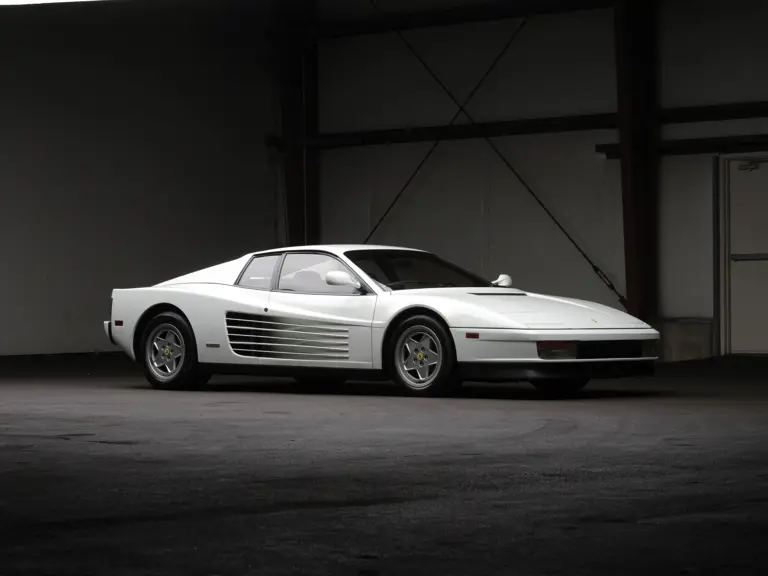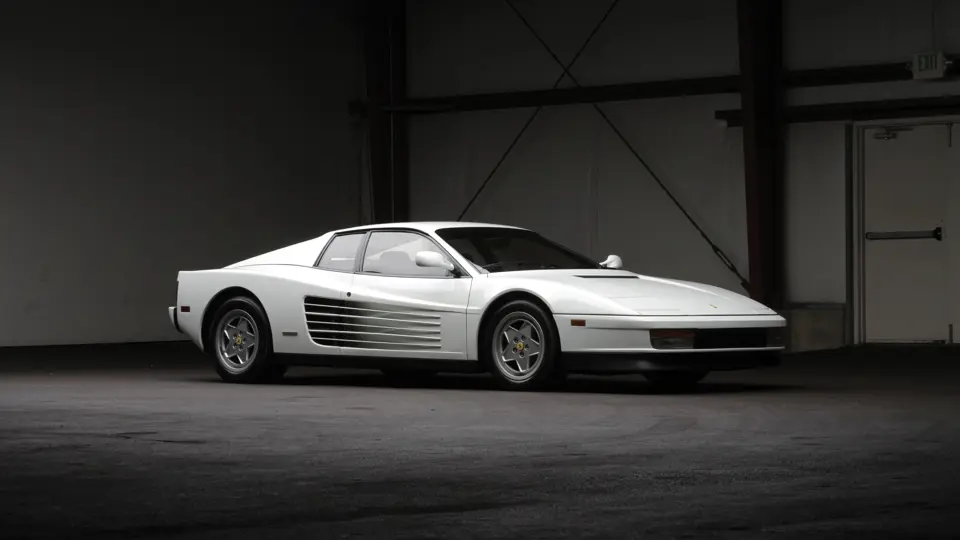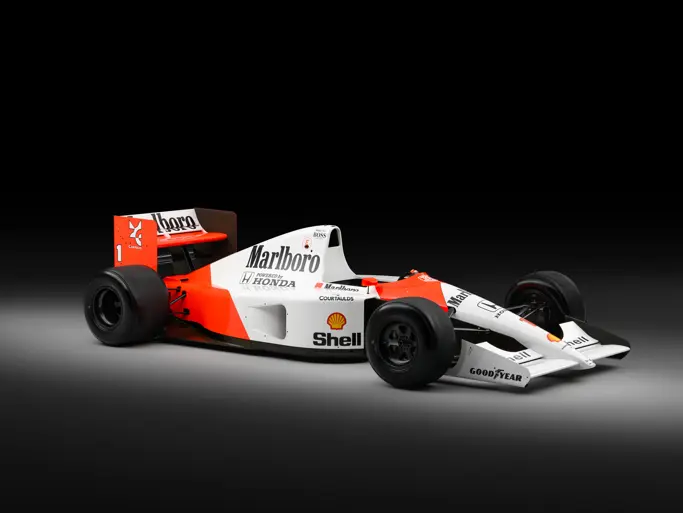 | Auburn, Indiana
| Auburn, Indiana
The most iconic automobile of the 1980s was, perhaps, the Ferrari Testarossa. The Italian word Testarossa translates to “redhead,” a nod to the color of the cylinder heads on the original, race-dominating Ferrari 250 TR of the late-1950s and early-1960s. Honoring that model’s heritage, Ferrari bestowed the nickname on the new coupe.
Introduced the night before the opening of the 1984 Paris Motor Show at the famed Lido nightclub on the Champs Elysees, Ferrari’s dramatic Testarossa took the world by storm. It gained additional popularity and was the star of many a growing boy’s bedroom wall, in-part due to it being showcased in the hit TV show Miami Vice. In the process, it became a “poster-child” for a generation. However, the Testarossa is so much more than just a looker, and experts in the know heaped praise upon it as the car made the rounds to the various specialty magazines that put the Ferrari through its paces and reported their findings to anxious, Ferrari-loving aficionados.
Designed to replace the Berlinetta Boxer, Pininfarina’s designers took Ferrari’s mid-engined V-12 platform in an entirely different styling directly from previous Ferraris. Angular and aggressive, the Testarossa’s bodywork was a dramatic departure from the more curvaceous 512 BB and improved on the basic platform of its predecessor. As the successor to the flagship Berlinetta Boxer, the mid-engined 12-cylinder model featured added horsepower, with 48 valves for better breathing and an improved clutch to help deliver all that power to the rear wheels. As a result, the Testarossa’s performance was incredible for the 1980s, and it still remains respectable today.
Mechanically, the Testarossa was a huge improvement over the 512 BB. Redesigned to address the issues of a lack of luggage space and uncomfortable cabin heat, Ferrari needed its new car to be bigger than its predecessor. Its overall width was increased by nearly half a foot, while the wheelbase grew by 2.5-inches over the 512, giving the Testarossa a menacing stance on the road and also providing its occupants with more space for their belongings. The most notable visual feature was its long side-strakes that run along the doors and rear three-quarter panels. However, those controversial “cheese graters” were functional, drawing air into the relocated dual rear-mounted radiators and addressed any engine or cabin overheating issues. Along with the imposing performance, the Testarossa enjoyed an increased degree of usability due to these refinements.
Thanks to the further power, the 4.9-liter, DOHC flat-12 coupe registered a top speed of 180-mph. Its flat-12 design features two banks of six horizontally-opposed cylinders and 48 valves and dry-sump oil system. Bosch's latest K-Jetronic fuel-injection improved power and drivability; with 390 horsepower available, the Testarossa was capable of sprinting to 60-mph in 5.4-seconds. The Ferrari has a five-speed manual gearbox in a rear-mounted transaxle, four-wheel independent suspension with unequal-length A-arms, coil springs and anti-roll bars and four-wheel hydraulic disc brakes.
Proudly wearing the Testarossa nameplate, this white stallion is, of course, propelled by the famous Ferrari 12-cylinder engine. It is offered very well-equipped with air conditioning, clock, AM/FM sound system, power windows and a tilt steering column. The odometer displays a meager 20,000 kilometers (under 13,000 miles) and the black leather interior reflects this minimal use with very little wear in any way. Fit with Goodyear Eagle tires, the factory alloy wheels are excellent with no curb marks and the paint is equally without issue. Of further note, this Ferrari also still retains the original jack equipment in the pouch as it has likely never been used. This Testarossa will likely only appreciate in value making for a perfectly enjoyable investment.
Just over 7,000 Testarossas were built between 1984 and 1991 before the line evolved into the 512 TR. The Testarossa was the ultimate status symbol in a decade that obsessed upon them, and like most things that were the best in the world in their day, it has aged exceptionally well. Today, the “Redhead” still looks great, and gearheads all over the world still want one. This is a world-class example, still good as new.





